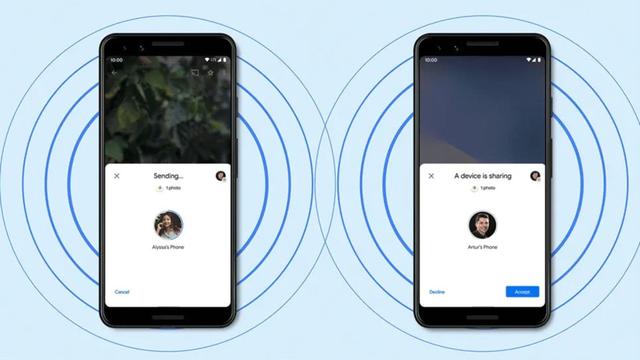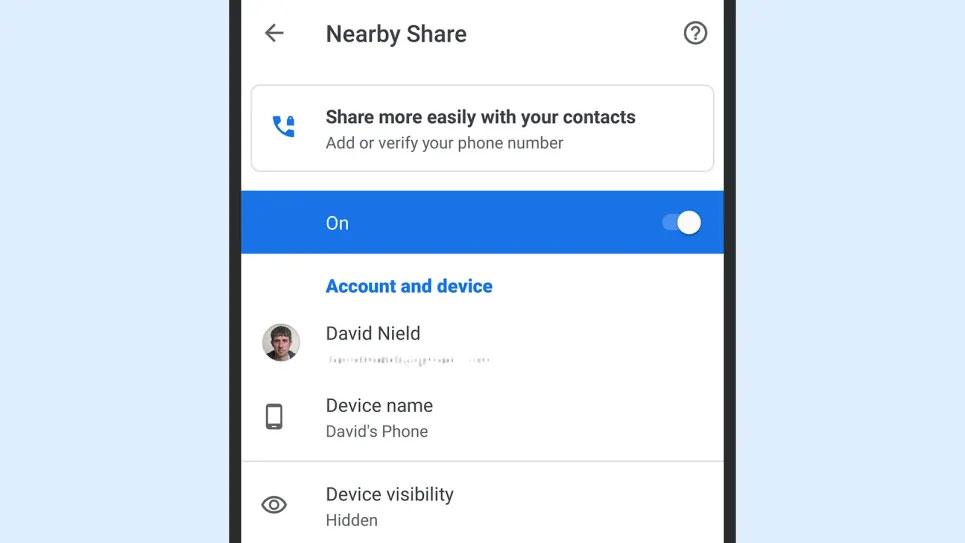"Portable Wi-Fi" Review
25/03/2022

Android finally has a feature called Nearby Share, similar to Apple's AirDrop. This is a function that allows you to quickly exchange files between Android devices.
For file-sharing apps to work properly, they need to allow access very deep into your device. But with Google's own options, you don't have to trust third-party apps that may or may not be truly secure. The very popular file-sharing app for Android recently came to light with security issues, but as you can see, we can't let our guard down.
The integration of Nearby Share into Android makes it very easy to use. In my testing with Gizmodo, Nearby worked as expected, with no major issues with connectivity or speed. With this closeness to AirDrop, many Android users will end up using Nearby for file sharing.
Both Nearby and AirDrop use both Bluetooth and Wifi technology to quickly share files between devices. You can send images, documents, web URLs, and even Android apps. There are various apps that can share files, from Dropbox to WhatsApp, but Nearby and AirDrop perform communication between devices, so you can share files even if you are not connected to Wifi or mobile network.
Nearby can be used on any device running Android 6.0 Marshmallow or higher. So it will work with many of the devices that are popular today. Nearby isn't available on iPhones or iPads, just as AirDrop isn't available on Android devices. It seems that neither Apple nor Google intends to make our lives easier any time soon.
The instructions below are for the stock Android 11 that Google installs on Pixel devices. So older Android devices or devices from different manufacturers may have slightly different menus and screens, but the latest OS should work.
To use Nearby Share, enable both Bluetooth (Settings > Connected Devices > Connection Settings > Bluetooth) and Location (Settings > Location). After that, you can enable Nearby Share in Settings, tap Google, and select Connect Devices. Alternatively, you can choose whether to enable it by trying to share images, etc.

To change the advanced settings of the function, tap "Settings", "Google", "Device Settings" and then "Nearby Share". If you change "Device name", you can change this device name that can be seen from the device of the sharing destination, and "Use data communication together" selects whether to transfer files using Wifi and data communication if necessary.
"Device Visibility" sets how easy it is for others to find your device. Selecting "All Contacts" will allow all your contacts to discover your device, while "Some Contacts" will discover only those you choose. Of course, in order to detect it, we need to turn on Nearby Share. Otherwise no one can see it.
The last option is 'Private' so no one can see your device. The difference with Nearby Share turned off is that you get a notification when a nearby Android device starts sharing. There you can choose whether or not to show your device.
No matter what you choose, if the sender chooses your device to send to, you'll need to approve it first. So you won't be forced to take photos and videos you don't want. Furthermore, these options only affect your receiving, not your sending, and have nothing to do with which devices you can see.
Nearby Share will appear as an option when you press the Android default share button. The name of the button may be Nearby or Nearby Share depending on the app. If you can't see it, scroll down to find it, or make sure Nearby Share is turned on on your device.
Once you start sharing, select the device you want to send to. Once the recipient confirms the transmission, the transfer will begin. There is no need to keep the Nearby Share panel open while data is being sent. This is because the work is done in the background until the transfer is complete.
Nearby Share automatically selects the fastest and easiest transfer protocol from Bluetooth, Bluetooth Low Energy, WebRTC, and peer-to-peer Wifi. It will be possible,” Google explains.
Nearby Share will be officially available on Chromebooks soon, but that's still a long way off. It now requires a few steps to enable.
Nearby Share and AirDrop are very similar, but differ slightly in how you choose who can see your device. If you go to "Settings", "General", and "AirDrop", you can choose "Do not receive (no one can detect your device)" or "Contacts only (only people registered as contacts can detect)". , and Everyone (Anyone can detect your device).
Unlike Nearby Share, it won't ask you to make yourself discoverable when someone nearby tries to use AirDrop. But what they all have in common is that you always have to manually approve the receipt of files.